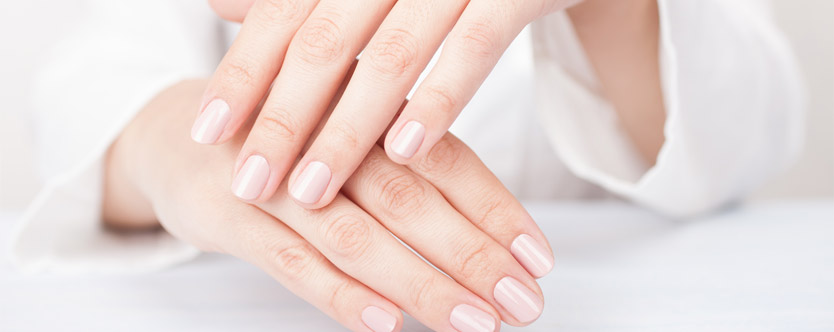
How your nails reflect your health
Has it ever occurred to you that nails can help gauge your health status? Healthy nails should sport a typical pink shade. They are slightly raised in the middle, then curve down a bit at the tip. But sometimes they may change color, texture and shape, signifying a deficiency of nutrients, infection or an underlying health issue.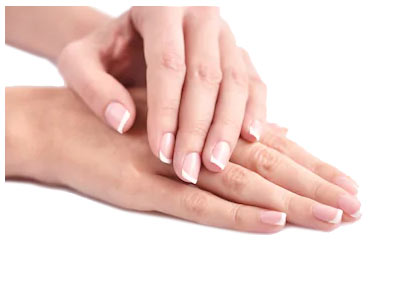
Fingernails are made of keratin, a protein similar to what hair is made of. Just like hair, which turns brittle, dull and dry if not provided with adequate nourishment the nails too lose their color, luster and tone. Although the rate varies in each individual, nails grow an inch and half each year. Nails grow quicker in younger people than older people, in pregnancy, in summer than in winter and in hands rather than in feet.
Here is a snapshot of certain symptoms of nails, what they signify and the possible treatment through food.
Abnormality in nail shapes
A nail which curves in the opposite direction at the tip is a symptom of chronic iron deficiency anemia. Whereas, nails that curl 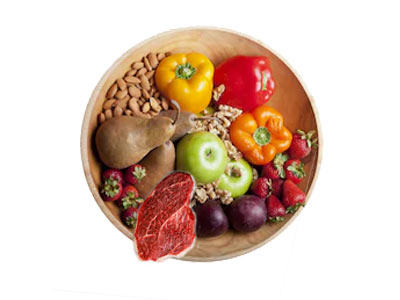 under the tips signify heart or respiratory problems. Similarly, nails raised at the base may also indicate respiratory trouble. Hormonal disorders may lead to square wide nails, and flat-thin nails may be a result of insufficient vitamin B12. Meat, dairy products and eggs are great sources of vitamin B12. Besides, having a good intake of iron rich foods through green leafy vegetables, nuts and organ meats, complimenting it with vitamin C sources such as any citrus fruit or lemon juice, helps enhance iron absorption.
under the tips signify heart or respiratory problems. Similarly, nails raised at the base may also indicate respiratory trouble. Hormonal disorders may lead to square wide nails, and flat-thin nails may be a result of insufficient vitamin B12. Meat, dairy products and eggs are great sources of vitamin B12. Besides, having a good intake of iron rich foods through green leafy vegetables, nuts and organ meats, complimenting it with vitamin C sources such as any citrus fruit or lemon juice, helps enhance iron absorption.
Peeling
The nail contains several layers of keratin that are sealed together. However, when unprotected hands are exposed to hot air,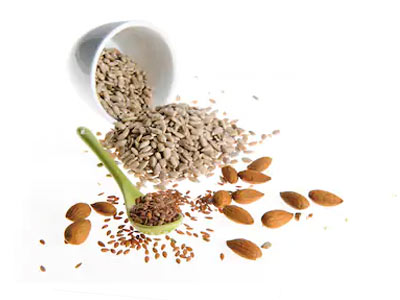 water or cold air, these sealed layers may peel off. Peeling nails means that the diet is lacking in omega fatty acids. Supplementing the diet with foods rich in omega fatty acids, such as walnuts, flax seeds, almonds, nuts, sunflower seeds and evening primrose oil will help improve moisture levels of dull nails. Besides, moisturizing your hands with a body lotion also helps keep the layers supple.
water or cold air, these sealed layers may peel off. Peeling nails means that the diet is lacking in omega fatty acids. Supplementing the diet with foods rich in omega fatty acids, such as walnuts, flax seeds, almonds, nuts, sunflower seeds and evening primrose oil will help improve moisture levels of dull nails. Besides, moisturizing your hands with a body lotion also helps keep the layers supple.
Brittleness
Many women are often heard of complaining about their nails being too brittle and tend to crack too easily. Though the problem 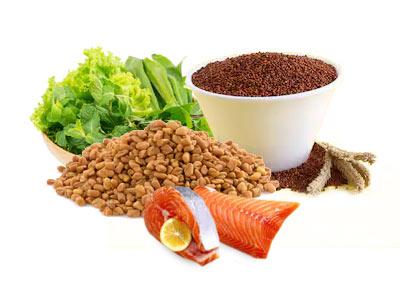 seems quite simplistic, there are several underlying causes. Brittle nails cannot hold on the moisture, tend to dry too easily and crack. An under-active thyroid is often associated with brittle nails. A diet lacking in calcium and protein also cause nails to break or crack easily as the nails lack in strength. Consume foods rich in iron (methi, nachini, fish, and most leafy vegetables) and having biotin supplement and eggs will help rectify the problem to a certain degree. Besides, one must try to avoid leaving hands wet for too long as they worsen brittleness. You can increase calcium intake through green leafy vegetables, dairy products, sesame seeds or even a daily calcium supplement.
seems quite simplistic, there are several underlying causes. Brittle nails cannot hold on the moisture, tend to dry too easily and crack. An under-active thyroid is often associated with brittle nails. A diet lacking in calcium and protein also cause nails to break or crack easily as the nails lack in strength. Consume foods rich in iron (methi, nachini, fish, and most leafy vegetables) and having biotin supplement and eggs will help rectify the problem to a certain degree. Besides, one must try to avoid leaving hands wet for too long as they worsen brittleness. You can increase calcium intake through green leafy vegetables, dairy products, sesame seeds or even a daily calcium supplement.
Looking yellow
Yellowing nails are early signals of various internal disorders, such as diabetes, respiratory or liver problems. Yellow spots on the nails can be an indicator of fungus or psoriasis. Seek your doctor’s advice for fungal problems.
White spots
White lines found in or across a nail most likely indicates iron or zinc deficiency, but it may also be a sign for fever, heart 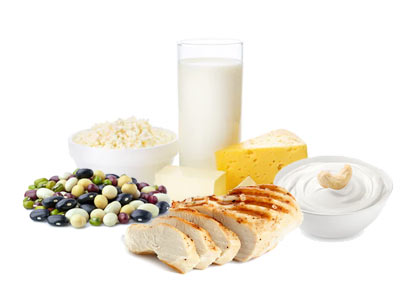 disease, kidney disorder or liver problems. It can also signify more complex issues like eczema or psoriasis. To raise your zinc levels, eat dried beans, cashews, yogurt, raisin, chickpeas, dairy products, almonds, milk, chicken breast, kidney beans, peas and oatmeal.
disease, kidney disorder or liver problems. It can also signify more complex issues like eczema or psoriasis. To raise your zinc levels, eat dried beans, cashews, yogurt, raisin, chickpeas, dairy products, almonds, milk, chicken breast, kidney beans, peas and oatmeal.
Turning colors
Fungal infections are one of the leading causes for fingernails to take on an unhealthy tinge. A yeast infection causes the nail 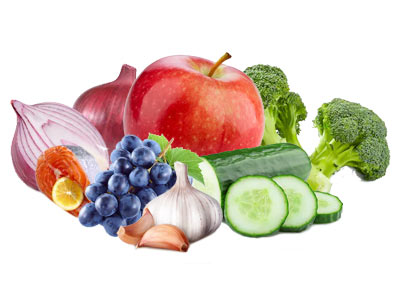 to separate from the base. Whereas, a bacterial infection can cause the affected nail to turn slightly green. Bluish nail beds can be a sign of lung trouble, which causes poor circulation in the finger tips, whereas reddish-brown spots can indicate a deficiency of folic acid, protein or vitamin C. Undergoing treatment with antibiotics and diet rich in anti-oxidants will help ease the problem to a certain degree. Consuming broccoli, fish, onion, apples, cucumbers, grapes, garlic, asparagus (rich in sulphur) ensures proper circulation and good nail growth.
to separate from the base. Whereas, a bacterial infection can cause the affected nail to turn slightly green. Bluish nail beds can be a sign of lung trouble, which causes poor circulation in the finger tips, whereas reddish-brown spots can indicate a deficiency of folic acid, protein or vitamin C. Undergoing treatment with antibiotics and diet rich in anti-oxidants will help ease the problem to a certain degree. Consuming broccoli, fish, onion, apples, cucumbers, grapes, garlic, asparagus (rich in sulphur) ensures proper circulation and good nail growth.
Nail textures
When the nail texture shows vertical ridges along the surface, this may be an indicator of kidney trouble, iron deficiency, poor absorption of vitamins and nutrients, and an overall poor health of an individual. These vertical ridges along with bumpy nails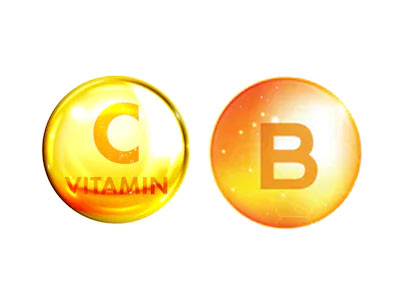 may also indicate the possibility of developing arthritis. When the ridges run horizontal rather than vertical, they may be indicative of physical and mental stress. A diet rich in vitamin C and B-complex vitamins helps reduce the appearance of these ridges.
may also indicate the possibility of developing arthritis. When the ridges run horizontal rather than vertical, they may be indicative of physical and mental stress. A diet rich in vitamin C and B-complex vitamins helps reduce the appearance of these ridges.
For healthy nails makes sure you eat plenty of good quality protein. Avoid applying artificial nails over your own. They may look nice, but they destroy your nails and may also contribute to fungal infections.
ANJALI MUKERJEE, Nutritionist, Founder Director-Health Total, having health centers
in Mumbai, Delhi, Bangalore, Pune -manages obesity & other health related disorders.
Contact numbers: 1800 8918131/+91 86575 61727
For further information, Visit www.health-total.com
